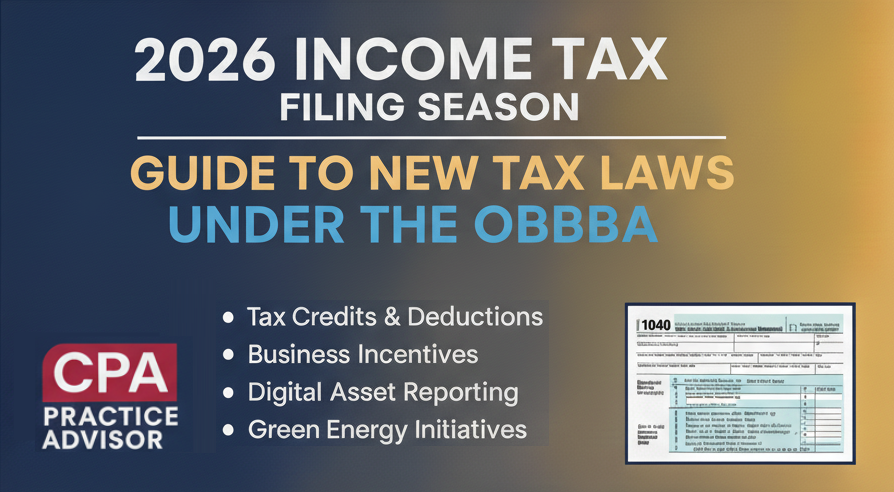As you know, skimpy federal income tax depreciation allowances generally apply to passenger autos used for business (IRC Sec. 280F). These are the so-called luxury auto depreciation limitations. Specifically, for passenger autos placed in service in 2013, the maximum depreciation deductions (including the Section 179 deduction) are as follows:
Of course, when a passenger auto is used less than 100% for business, these figures are cut back even further. In fact, the average client may not live long enough to fully depreciate a really expensive car.
Better Depreciation Rules or Vehicles Falling outside Passenger Auto Definition
Fortunately, the luxury auto depreciation limitations only apply to passenger autos [IRC Sec. 280F(a)(1)(A)]. When the vehicle in question is used over 50% for business and is not classified as a passenger auto, it can be depreciated without limit under the MACRS rules for transportation equipment, which is considered to be five-year property. In addition, new vehicles that are outside the passenger auto definition also qualify without limits for 50% first-year bonus depreciation if acquired and placed in service during calendar-year 2013 [IRC Sec. 168(k)].
Finally, new and used vehicles that fall outside the passenger auto definition also qualify for the Section 179 deduction (generally a total of $500,000 for all eligible property placed in service in tax years beginning in 2013). As explained later, however, heavy SUVs are subject to a reduced Section 179 limit of $25,000 per vehicle.
Unless Congress takes action, bonus depreciation won't be available after 2013. Furthermore, the Section 179 deduction limit will drop to a $25,000 combined total for all eligible property acquired and placed in service during tax years beginning after 2013-not just for heavy SUVs. So, a business that is on the fence about buying a vehicle that isn't a passenger auto this year or next may want to get it done sooner rather than later. Of course, it is possible that Congress will extend the increased Section 179 deduction and bonus depreciation beyond 2013, but why take the chance?
Clearly, the tax-saving trick is buying something outside the passenger auto definition. Because a car is a passenger auto unless its unloaded weight exceeds 6,000 pounds, few cars, if any, escape passenger auto status. However, a truck, van, or SUV escapes passenger auto status if its Gross Vehicle Weight Rating (GVWR-the manufacturer's maximum weight rating when loaded to capacity) exceeds 6,000 pounds. [See IRC Sec. 280F(d)(5)(A).] In making this determination, the weight rating and the manufacturer's classification as a car, truck, or van are the controlling factors, not the type of chassis. (See CCA 201138046 .)
These “heavy” vehicles are eligible for the favorable depreciation rules outlined earlier (as opposed to the stingy luxury auto rules that apply to passenger autos). As you'll see, quite a few SUVs, pickups, and vans qualify as heavy.
Reduced Section 179 Deduction for Heavy SUVs
There is a $25,000 per vehicle limit on Section 179 deductions for any heavy SUV with a GVWR over 6,000 pounds and less than 14,001 pounds [IRC Sec. 179(b)(5) ]. For this purpose, the term heavy SUV includes trucks and vans, as well as what is normally thought of as an SUV. Exception: the reduced deduction rule doesn't apply to:
(1.) Vehicles designed to seat more than nine passengers behind the driver's seat. For example, many hotel shuttle vans will qualify for this exception.
(2.) Vehicles equipped with a cargo area that is not readily accessible directly from the passenger compartment and that is at least six feet in interior length. The cargo area can be open or designed to be open, but enclosed by a cap. For example, many pickups with full-size cargo beds will qualify for this exception. Some “quad cabs” and “extended cabs” with shorter cargo beds may not.
(3.) Vehicles with: (a) an integral enclosure that fully encloses the driver's compartment and load carrying device, (b) no seating behind the driver's seat, and (c) no body section protruding more than 30 inches ahead of the leading edge of the windshield. For example, many delivery vans will qualify for this exception.
Vehicles with GVWRs above 6,000 pounds that fall under these exceptions remain eligible for the full Section 179 deduction ($500,000 all eligible property placed in service in tax years beginning in 2013). This means the business portion of the cost of these vehicles (both new and used) can often be completely deducted in Year One under Section 179.
Depreciation Rules for Heavy SUVs Are Still Quite Good
The idea of buying a heavy SUV is still a smart year-end tax planning strategy for 2013. Why? Because a heavy SUV used over 50% for business can qualify for the following depreciation benefits:
(1.) The $25,000 heavy SUV Section 179 deduction (available for both new and used vehicles). This is a per vehicle limit. Thus, a client could feasibly place 20 heavy SUVs costing more than $25,000 in service during 2013 and qualify for a total Section 179 deduction of $500,000 ($25,000 per vehicle, limited to $500,000).
(2.) The 50% first-year bonus depreciation break (available for new vehicles acquired and placed in service in calendar-year 2013).
(3.) Accelerated MACRS depreciation over five years for the balance of the vehicle's depreciable basis (available for both new and used vehicles).
In contrast, passenger autos fall under the less-favorable luxury auto depreciation limitations discussed earlier.
Example: The first-year depreciation amount for a new $65,000 heavy SUV placed in service during 2013 and used 100% for business will usually be $49,000 [$25,000 Section 179 deduction + $20,000 bonus depreciation deduction (50% x $40,000) + $4,000 MACRS depreciation deduction (20% x $20,000)]. In contrast, the maximum first-year depreciation deduction for a new $65,000 passenger auto placed in service during 2013 and used 100% for business is only $11,160 (or $11,360 for a light truck or van).
Variation 1: If the heavy SUV was not new, but instead was a used vehicle, 50% bonus depreciation would not be available. However, the business's 2013 depreciation deduction would still be a respectable $33,000 [$25,000 Section 179 deduction + $8,000 MACRS depreciation deduction (20% x $40,000)]. That's still a far cry from the stingy $3,160 ($3,360 for a light truck or van) deduction allowed for a used passenger auto placed in service during 2013 and used 100% for business.
Variation 2: If, instead of the heavy SUV, the business placed in service a $65,000 heavy pickup truck with a six-foot cargo bed, the entire $65,000 would a be fully deductible under Section 179.
Variation 3: If the business waits until 2014 to acquire the heavy pickup truck in Variation 2, its first year deduction will be only $33,000 [$25,000 Section 179 deduction + $8,000 MACRS depreciation deduction (20% x $40,000)] (assuming no other Section 179 deduction was claimed for the year). Not too bad, but a far cry from the $65,000 deduction available if the truck had been placed in service in 2013.
Caveats to Remember and Discuss with Clients
Clients should understand the following caveats:
- Vehicles (including heavy SUVs, pickups, and vans) are generally listed property [IRC Section 280F(d)(4)]. As such, they are subject to the business-use substantiation rules that apply to listed property.
- The Section 179 deduction is unavailable for that part of the cost of a vehicle paid for with a trade-in transaction that's treated as Section 1031 like-kind exchange [IRC Sec. 179(d)(3) and Reg. 1.179-4(d)]. [That part is, however, eligible for bonus depreciation. See Reg. 1.168(k)-1(f)(5)(iii) .]
- The Section 179 deduction is limited to the taxpayer's net trade or business income for the year, with any excess generally carried over to the following year.
- If business use falls to 50% or less, excess depreciation must be recaptured. Excess depreciation is the excess of Section 179 and other depreciation deductions (including bonus depreciation) allowed in years that the vehicle's business use exceeded 50% over the depreciation that would have been allowed in those years using straight line depreciation over a five-year recovery period.
- Deductions allowable for state income tax purposes may be different from those allowed for federal tax purposes.
- If a client's closely held corporation will be the owner of the vehicle, personal use by the shareholder-employee must be reported as taxable compensation income. Also, if the shareholder-employee owns over 5% of the stock, such compensatory use does not count as business use for purposes of the more-than-50% business-use requirement for listed property to qualify for accelerated MACRS depreciation, first-year bonus depreciation, and the Section 179 deduction.
Thanks for reading CPA Practice Advisor!
Subscribe Already registered? Log In
Need more information? Read the FAQs
Tags: Income Taxes



